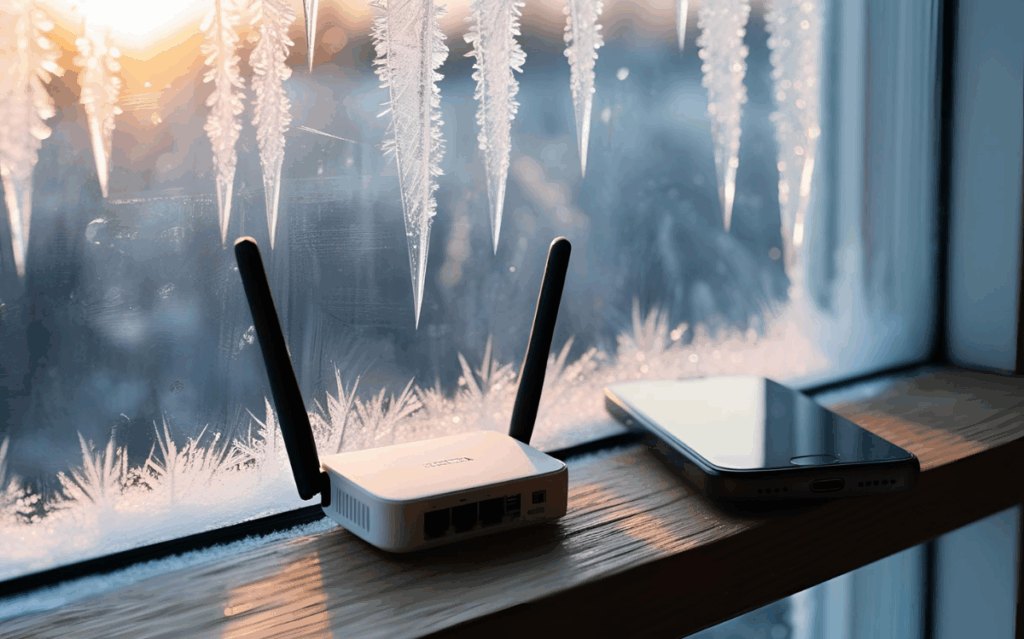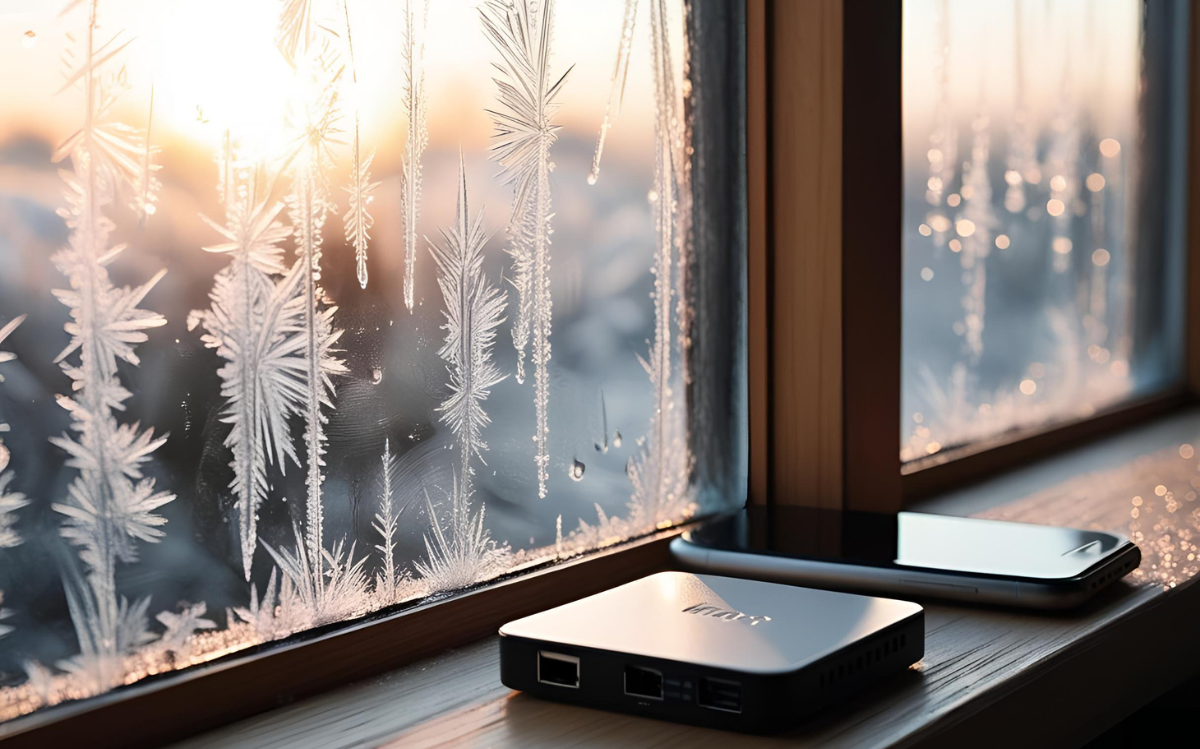When we first explored the Alaska Lifeline program, we found it’s a smart solution to a big problem—affording phone and internet service. In Alaska, where space is vast and conditions can be harsh, staying connected is crucial.
The program gives us discounted phone and broadband services, plus free or low-cost devices, all through an easy application. Our experiences helping others navigate this program show it’s not just about saving money; it’s about keeping families linked, safe, and informed. If you’re curious about how these benefits could help you, keep reading to discover more.
Key Takeaway
- The Alaska Lifeline program delivers significant monthly discounts on phone and internet services, easing financial burdens for low-income households.
- It provides free or subsidized devices and waives installation fees, removing barriers to access.
- The program supports health, safety, and social connectivity, especially for seniors and residents in remote areas.
Affordable Communication Services
Discounted Phone and Internet Bills
Monthly savings on phone and broadband services
We notice the relief on people’s faces when their phone and internet bills shrink by $40 each month. That’s $480 a year, and it’s not just numbers—it’s groceries, fuel, heating oil. In Alaska, Lifeline broadband isn’t just handy, it’s a necessity. Our team has seen parents use the extra cash for school supplies or to chip away at old medical bills, things that always seem to pile up.
Bundled voice and broadband discounts are part of the deal. Not everyone realizes Alaska’s FCC program lets you combine both into one bill, which means less paperwork, fewer headaches. We’ve helped folks sort through their options, and most are surprised how easy it is once you know where to look.
Eligibility requirements for discounts
To qualify, your income has to be at or below 135% of the Federal Poverty Guidelines, or you’re already in a program like Medicaid, SNAP, SSI, or TANF. For a family of four, that’s under $37,463 a year.
Our experience shows most people already meet these requirements, they just haven’t checked. We walk them through gathering tax returns, pay stubs, or Medicaid letters—usually, it’s all right there in the kitchen drawer.
Unlimited Local Calling and Data Access
Importance of unlimited local calls for daily coordination
Unlimited local calling changes how people get by. In our work, we’ve seen it help parents call the school, elders check in with clinics, neighbors organize snowplow shifts. It’s not about small talk, it’s about getting through the day. We remember helping an older woman who used to ration her calls, afraid her plan would cut off. Now, she calls her doctor whenever she needs. That’s real peace of mind.
Broadband speed standards and their benefits
Lifeline broadband in Alaska has to hit at least 30 Mbps down, 5 Mbps up (Government-mandated minimum broadband standards). That’s fast enough for telehealth, school Zooms, job applications. We’ve set up families with Lifeline internet so their kids can attend class, or so parents can see a doctor without driving hours. No more buffering, no more missed appointments.
Nationwide Talk, Text, and Data
Coverage and data limits with major providers
We’ve worked with providers offering 12GB of high-speed data every month. That’s enough for job hunting, video chats, and keeping up with family Outside. Unlimited texting is standard on most plans—Several Lifeline-approved carriers in Alaska offer reliable service, and each has its own coverage map.
Benefits of nationwide connectivity for users
Nationwide calling and texting means you’re not stuck just talking to folks nearby. We’ve seen students call tutors out of state, workers line up jobs before moving, families stay close even when they’re far apart. You keep your number, you keep your ties. That’s what matters.
Device and Installation Support
Free or Subsidized Phones
Types of devices offered
We’ve handed out everything from flip phones to smartphones through the Lifeline free phone Alaska program. Most come with cameras, texting, and apps—depends on the carrier’s stock. Sometimes the Lifeline wireless service discount covers the device, or at least makes it affordable. It’s not about getting the latest model, just something that works.
Importance of device access for low-income and senior users
We often help seniors who’ve never used a smartphone. Once they get one, we show them how to call, text, even video chat with family. With a device, Lifeline actually connects people—jobs, doctors, classes, all possible now.
Waived Installation and Activation Fees
How waived fees reduce barriers to service adoption
We’ve seen folks walk away from plans due to deposit fees. When a participating Lifeline provider waives that, we can get people signed up right away. No stress over cash.
Process for service activation without upfront costs
Getting started is simple. Show proof, pick a plan, and the carrier sets it up—sometimes in the office, sometimes shipped to your door. No hidden fees, no surprises. That’s a big deal for families watching every penny.
Eligibility and Application
Eligibility Criteria
Income thresholds based on Federal Poverty Guidelines
We always keep a chart in our folder—135% of the Federal Poverty Guidelines, updated every year. Current guideline examples:
- 1 person: $20,331
- 2 people: $27,594
- 3 people: $34,857
These numbers change, so we double-check before filling out any forms. Gross income counts, not take-home. Most folks bring a tax return or three months of pay stubs. We help add it up, sometimes right at the kitchen table, and see if they fit the guidelines.
Participation in qualifying government assistance programs
We ask about Medicaid, SNAP, SSI, TANF, Section 8, Child Care Assistance, or Federal Public Housing. If someone’s already getting help, chances are they qualify for Lifeline too. A lot of people don’t know a benefit letter is all they need. We’ll dig through mail with them if we have to. Usually, it’s right there, unopened.
Application Process
Methods for submitting applications (online, mail)
Online is fastest—National Verifier website. If internet is spotty, we print the form, fill it out together, and mail it. We’ve even done applications in the library parking lot using our phone’s hotspot.
Required documentation and verification steps
Proof is key. Benefit letters, pay stubs, Social Security card, ID. We always remind folks to gather everything first. If something’s missing, the application bounces back. Triple checking saves headaches.
Recertification Requirements
Annual recertification process and timelines
Every year, the program sends a recertification notice. We’ve seen people toss it, thinking it’s junk mail. We tell them—open it, respond online or by mail, mark the calendar.
Consequences of non-recertification or nonpayment
Miss recertification, and you lose the Lifeline discount. Miss a payment, service can get cut. We’ve helped folks get back on, but it takes time. Best advice—keep documents handy, check the mail, and call if something’s off. One call can save a lot of hassle.
Impact on Daily Life
Credits: HealthWatch Wisconsin
Health and Safety Benefits
Access to emergency services and telehealth options
We’ve seen firsthand how a Lifeline phone can be the only link to help when someone’s hurt and there’s no one else around. Out near Nome, a mom called for a medevac with shaking hands—before Lifeline, there was just silence. That old flip phone? It’s survival, not just convenience.
Storms close roads for days. With Lifeline broadband, folks talk to doctors over video, even if the clinic’s 300 miles off. Elders check in about diabetes, moms get prenatal advice, everyone refills prescriptions. It’s the only way sometimes.
Role of broadband in healthcare and prescription management
We know people using Lifeline’s 25 Mbps down, 3 Mbps up speeds for health apps and video calls. One woman tracks her blood sugar with a Bluetooth monitor and tablet—no data caps, so she’s always covered.
Lifeline lets us:
- Book checkups
- Order meds
- Access mental health care
- Use medical devices
No deposit needed. That’s a relief for anyone on Medicaid or SNAP.
Social Connectivity
Reducing isolation among seniors and remote residents
We get calls from folks who haven’t spoken to anyone in days. Unlimited local calling means they can reach family, join church radio, or just hear a voice. For elders, it’s a lifeline.
Facilitating communication with family and community
Some just want to text. We’ve seen people light up sending “good morning” to Anchorage. With Lifeline discounts, staying in touch doesn’t mean skipping meals.
Financial and Community Benefits

Budget Relief
Contribution of discounts and free devices to household finances
We see the Lifeline discount—$9.25 a month for most, $34.25 for Tribal lands—make a real dent in bills. Over a year, that’s more than $100 saved, sometimes $400 or more. The free device helps, too. We’ve watched people skip meals to buy a cheap phone before, but now they don’t need to.
With bundled voice and broadband, there’s finally a little room in the budget. Maybe rent gets paid on time, maybe the propane tank gets filled before it runs dry. It’s not flashy, just steady help that keeps families afloat.
Impact on reducing financial stress for low-income families
Some parents break down when they hear their phone ring for the first time in months. That Lifeline wireless discount means they don’t have to pick between staying connected and buying baby formula. We’ve helped folks apply online, by mail, even over the phone—once approved, you can feel the weight lift.
Lifeline covers SSI, SNAP, Medicaid, TANF. It’s not charity—it’s a program for families like ours.
Community Engagement
Enhancing access to community services and information
We use Lifeline phones to check city council updates, find out about school closures, or get fishery reports. Voice and broadband service mean we don’t miss emergency alerts or cultural events.
People show up more. Teens join after-school programs. Folks know when the food truck’s coming.
Role of connectivity in improving quality of life
With Lifeline, we get reliable service—no data caps, unlimited calls. It’s easier to look for jobs, stay safe, or join a family Zoom. Many providers cover more areas every year. We’re not asking for extras—just what everyone else already has. That’s what Lifeline gives us.
FAQ
What is the Alaska Lifeline program and who qualifies?
The Alaska Lifeline program gives you a discount every month on phone or internet bills. To get it, you must meet Lifeline income requirements or be part of Lifeline government assistance programs like Lifeline Medicaid eligibility or Lifeline Supplemental Security Income (SSI). Only one person per home can get the Lifeline one benefit per household. You’ll need Lifeline proof of eligibility, like a letter or a pay stub. The Lifeline FCC program Alaska runs it, with help from the Universal Service Administrative Company.
What services can I get through Lifeline phone service Alaska?
With Lifeline phone service Alaska, you may get Lifeline unlimited local calling, Lifeline long distance plans, or a Lifeline unlimited text plan. Some plans include Lifeline voice service only, others bundle internet and voice. In some areas, you can get Lifeline emergency communication for safety. Lifeline service providers Alaska may offer different options. People in remote areas can apply through the Lifeline program for Tribal Alaska or the Lifeline program for rural Alaska to stay connected.
What’s included with Lifeline broadband Alaska and how fast is it?
Lifeline broadband Alaska gives you low-cost internet. It must meet the Lifeline broadband speed minimum set by the government. Some providers include Lifeline unlimited broadband and Lifeline no data caps. In remote areas, people count on Lifeline reliable internet Alaska to stay connected. You might also find Lifeline broadband internet service bundled with phone service. Ask about a Lifeline discount for broadband and voice bundles in your area to save more money.
How do I apply for Lifeline and what proof do I need?
The Lifeline application process is easy. You can apply using Lifeline application online, Lifeline application phone, or Lifeline application mail. You’ll need to give Lifeline proof of eligibility. That could be a letter from Lifeline Supplemental Nutrition Assistance Program (SNAP) or Lifeline Temporary Assistance for Needy Families (TANF). You can also qualify through Lifeline Section 8 housing or Lifeline Federal Public Housing Assistance. If you need help, ask about Lifeline program application assistance.
Conclusion
The Alaska Lifeline program is a real support system. It cuts phone and internet costs, offers reliable service, and helps people—especially in remote or tough spots—stay connected to health care, family, and work.
For many, it’s more than savings; it’s safety and opportunity. If you or someone you know might qualify, it’s worth looking into. Apply for Lifeline benefits here through Free Government Phone by State, a helpful online guide that makes it easy to find programs available where you live.


